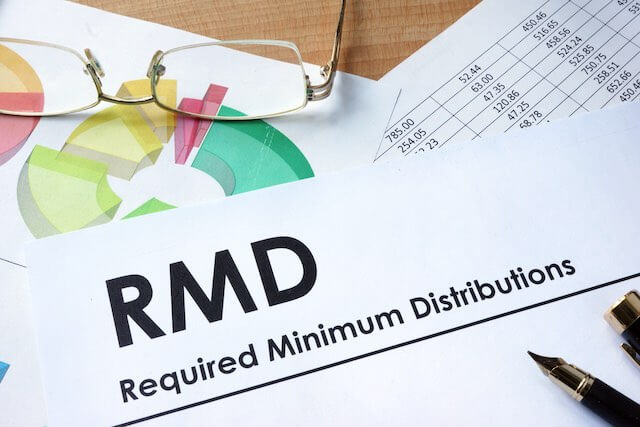The National Active and Retired Federal Employees Association (NARFE) has sent a letter to Congress asking that required minimum distributions (RMDs) on retirement accounts be suspended for calendar year 2020.
Currently, the law requires that individuals with defined contribution plans and IRAs who had reached the age of 70 ½ in 2019 must take their first RMD by April 1, 2020, and continue to take an RMD each year thereafter using a formula supplied by the IRS.
As Washington Post columnist Michelle Singletary wrote on March 23, the required minimum distributions are currently forcing seniors to make withdrawals in the middle of a bear market.
NARFE points out in their letter that the RMD calculation for 2020 is based on the retirement account balance as of December 31, 2019, and with the recent declines in the stock market, seniors will need to withdraw a greater percentage of their retirement accounts than expected or face a penalty.
Furthermore, NARFE argues that there is a precedent for this suspension when the Worker, Retiree, and Employer Recovery Act of 2008 temporarily suspended RMDs for the 2009 tax year.
One change already occurred in 2019 with the enactment of the Setting Every Community Up for Retirement Enhancement Act of 2019 (SECURE Act).
RMDs are delayed for individuals reaching age 70 ½ in 2020 or later. Such individuals may take a withdrawal earlier but must take their first RMD by April 1 in the year after they reach age 72.
Why have an RMD provision in the law?
Before the 1970s, workers received retirement benefits through a pension that guaranteed a set amount of income upon retirement.
As federal legislation defined contribution plans became more popular with employees and employers funding plans that gave employees more flexibility and control over their retirement accounts, concerns began to grow about the lack of taxes being paid.
Over time there grew concerns that:
“taxpayers were using these retirement vehicles as a means to accumulate tax-free wealth rather than a means to ensure an adequate retirement income. To address this issue, legislation was passed requiring taxpayers to take a minimum distribution for tax-deferred defined contribution plans upon reaching a specified age.”
Source: TREASURY INSPECTOR GENERAL FOR TAX ADMINISTRATION REPORT, 2015
The required minimum distribution (RMD) was a way to ensure that taxes owed on investments would be paid eventually.
As BNY Mellon points out in a white paper, RMDs also represent the transition in individuals’ lives from accumulating assets to the period when they will begin spending those assets to fund their retirement years.
In 2016, BNY Mellon estimated:
- The value of retirement assets for all RMD-eligible plans currently totals an estimated $16.2 trillion.
- The current population of 50-69-year-olds who will reach RMD status over the next 20 years will increase by more than 27 million individuals. By 2035, the total number of retirees taking RMDs could swell to 58.7 million individuals according to census projections.
- It is estimated that more than 65% of current traditional IRA investors (and their assets) will enter into the RMD strata in the coming 20-year period. If these projections are correct, up to $10 trillion in assets will be subject to mandatory withdrawals over the next two decades.
(See: Baby Boomers and Required Minimum Distributions, 2016)
These estimates were published before the SECURE Act pushed the RMD age to 72.
What to do now?
Given the desire in Congress to see quick action on the CARES Act, it is most likely that the delay in RMDs for 2020 will be included in the final legislation. In fact, the latest version of the Coronavirus Aid, Relief, and Economic Security, or CARES Act (S. 3548) does include such a provision for defined contribution plans and IRAs, including the Thrift Savings Plan (TSP). Update: This provision was included in the coronavirus stimulus bill signed into law last Friday.
For retirees, the suspension of a mandatory withdrawal this year will be a welcome relief, although it is not clear at present whether the current decline in the stock market will be temporary or long-lasting.
For the federal government itself, the suspension of RMDs removes one more source of revenue for a government facing a growing deficit that will have to be faced by some Congress and Administration at a future date.



